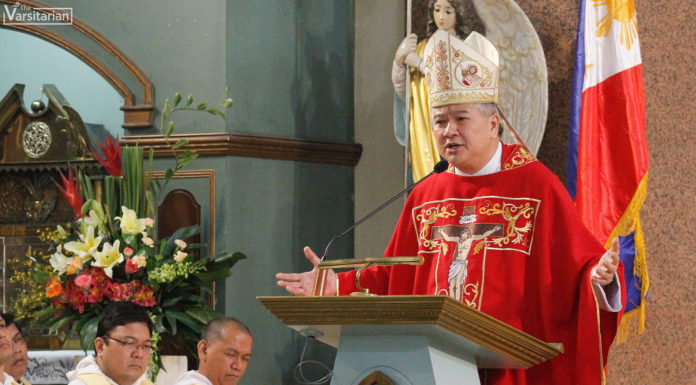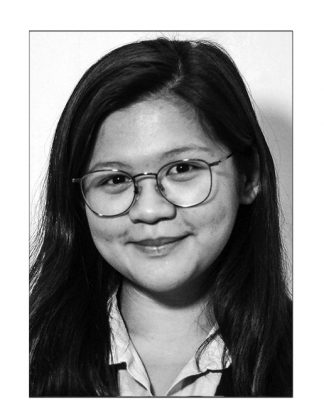THIS DOCTOR’S goal to keep athletes in tip-top shape through alternative healthcare rooted on his own love for sports.
An athlete himself, Dr. Martin Camara co-founded INTERCARE Healthcare Systems in 1993 to promote the use of complementary and alternative medicine (CAM), which uses traditional and natural methods such as acupuncture and chiropractic. He serves as its director of clinics and chiropractic specialist.
He now handles national sports teams like the Philippine Azkals and is co-chairman of the Medical Commission of the Philippine Olympic Committee.
Camara took up BS Psychology at UST but later ventured into chiropractic. Before he could finish his degree, he moved to the States where he graduated cum laude at the Palmer College of Chiropractic in West California in 1993. There, he also received an award in clinical excellence.
Sports and health
Growing up, Camara has always been interested in sports and was even a part of the baseball team of De La Salle Greenhills from 1979 to 1985. Apart from being a chiropractor, he is also a martial arts instructor and a triathlete.
“I know what it feels like to be an athlete, the imbalances and the pains,” he said.
Camara’s love for sports and human kinetics led him to engage in a medically inclined field known as chiropractic, which is concerned with the diagnosis, treatment, and prevention of disorders of the neuromusculoskeletal system and the effects of these disorders on general health.
“I’ve been always inclined in the human body, in movement, [and] in human kinetics,” he said. “I got interested in chiropractic because I have a brother who was doing his residency in the US and he was working in a hospital which had chiropractors on staff. That’s when I started researching about chiropractic, and eventually, it became my goal to be one.”
Back then, information on chiropractic education was not readily available since different universities at the time offered no such course, he said.
Coming from a family of doctors, Camara has always been attracted to the healthcare profession.
“My dad is a cardiologist, one of the first in the country, and graduated summa cum laude with a highest ever grade in the UP College of Medicine, which comes unbeaten since 1944,” he said. “We are 12 in the family and we have six medical doctors in the family. In my immediate family there are about 11 doctor Camaras.”
‘Unconventional’
Although regarded as “unconventional medicine,” CAM was known to have been used to treat patients in Japan and China dating back to the 19th century. Later in the '80s and '90s, it was considered an informal and still developing medical practice.
“The current framework at that time was that people had little options for treatment for non-surgical ailments. Alternative healthcare was in a very unprofessional state at that time,” said Camara, who is also the chairman of the Ad Hoc Committee of Chiropractic of the Philippine Institute of Traditional and Alternative Health Care of the Department of Health.
According to Camara, CAM posed risks for the patients since there was still no formal training for this type of healthcare. He added that during the early days, Filipino people were going to Binondo and other seedy places for the solutions to their back problems that offered no guarantee in its safety.
“There is no certification; you would put your hands on a Chinese doctor who hardly spoke English and was not even sure if the acupuncture needles he used were sterile,” he said.
Turn of events
Studying chiropractic was not that easy for Camara, given the relatively few researches available on the subject during his time.
“The Internet did not exist dominantly in the 1980s, so I had to do my research [in libraries and catalogues] here in the country so I can apply for a school from here,” he said. “It was a long process.”
He said that it is very easy for him to examine people with just one look. By how their stance appears, he said he can see if a person lacked flexibility and power.
“When I see a body, I know that body will eventually wear out unevenly, by looking at the structure—how it moves [and] how it functions, like a car and seeing its wheels out of alignment,” Camara said.
He had never imagined his practice would grow as huge as what it is today. He said that he had only aspired to be an ordinary doctor just like his father who had “one office and one secretary,” a far cry from what he has achieved now.
Thomasian and family
Although Camara did not finish his course in UST, he admitted to being very fond of the campus and its environment. To this day, he carries on his Thomistic values to which he ascribes his good morale and his ability to maintain a healthy work and lifestyle.
“The environment was very stimulating. It was a great place to be with very inspiring teachers,” Camara said. “Maybe because you have people all over the country coming to one place from BS Bio to BS Chem, etc.”
Having many roles to juggle, he tries to be a good father and husband. Despite the demands of work, Camara has never put his family on the line.
“With all the work that I have, be it at work or with the Azkals, I see to it that I am with my kids, and the family,” Camara said.
If there is one thing in which he believes the most, it is integrity. He said that it is very important in the character building of a person.
“You should [remember to] be highly practical, creative and ethical, and also a man of integrity whether you’re at work or with the family,” Camara said.















